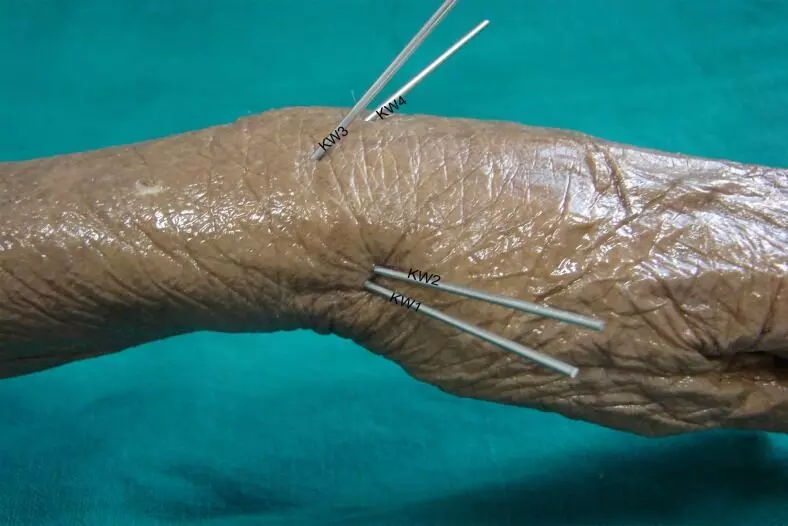
Kirschner (K) wires are commonly used in orthopaedic surgery for fixation of unstable fractures such as supracondylar humerus fractures in paediatric patients, distal radius fractures in paediatric and adult patients and elective surgery of the foot. They can be inserted percutaneously with minimal damage to soft tissues such as tendons and neurovascular structures, followed by cutting and bending of the wires. The wires are then either left protruding outside the skin or buried.
Overall, there is no consensus or clear guidance on the administration of antibiotics for K-wire. Reducing the incidence of SSI needs to be balanced with potential risks of the unnecessary use of antibiotics, such as antibiotic resistance and allergic reaction. Currently, there are no systematic reviews or meta-analyses that investigate the use of prophylactic antibiotics for orthopaedic surgery using K-wire.
Ahmad Abul et al conducted a study to investigate incidence of SSI using prophylactic antibiotics compared to no antibiotics in the context of percutaneous fixation of fractures with K-wire.
Two authors independently searched the following electronic databases: MEDLINE, EMBASE, EMCARE, CINAHL, and the Cochrane Central Register of Controlled Trials (CENTRAL). The last search was run on 10th January 2022.
A systematic review and meta-analysis were performed as per the Preferred Reporting Items for Systematic Reviews and Meta-analyses (PRISMA) Guidelines and a search of electronic information was conducted to identify all randomised controlled trials (RCTs) and non-randomised studies comparing the outcomes of antibiotic prophylaxis group versus those without antibiotic in patients undergoing orthopaedic surgery in which K-wire fixation was used. Incidence of surgical site infection (SSI) was the primary outcome. Random effects modelling was used for the analysis. The study has been published in “Indian Journal of Orthopaedics.”
Key findings of the study were:
• Four retrospective cohort studies and one RCT were identified with a total of 2316 patients.
• There was no significant difference between the prophylactic antibiotic and no antibiotic groups in terms of incidence of SSI (odds ratio [OR] =0.72, P=0.18).
“In conclusion, based on the current available evidence there is no significant difference in administering perioperative antibiotics for patients undergoing fracture fixation with K-wire. Further high quality, prospective studies are required to improve the evidence base to influence guidelines” the authors commented.
Further reading:
Peri operative Antibiotic Prophylaxis in K Wire Fixation: A Systematic Review and Meta analysis Ahmad Abul, Mohammad Karam et al Indian Journal of Orthopaedics (2023) 57:1000–1007 https://doi.org/10.1007/s43465-023-00879-6
